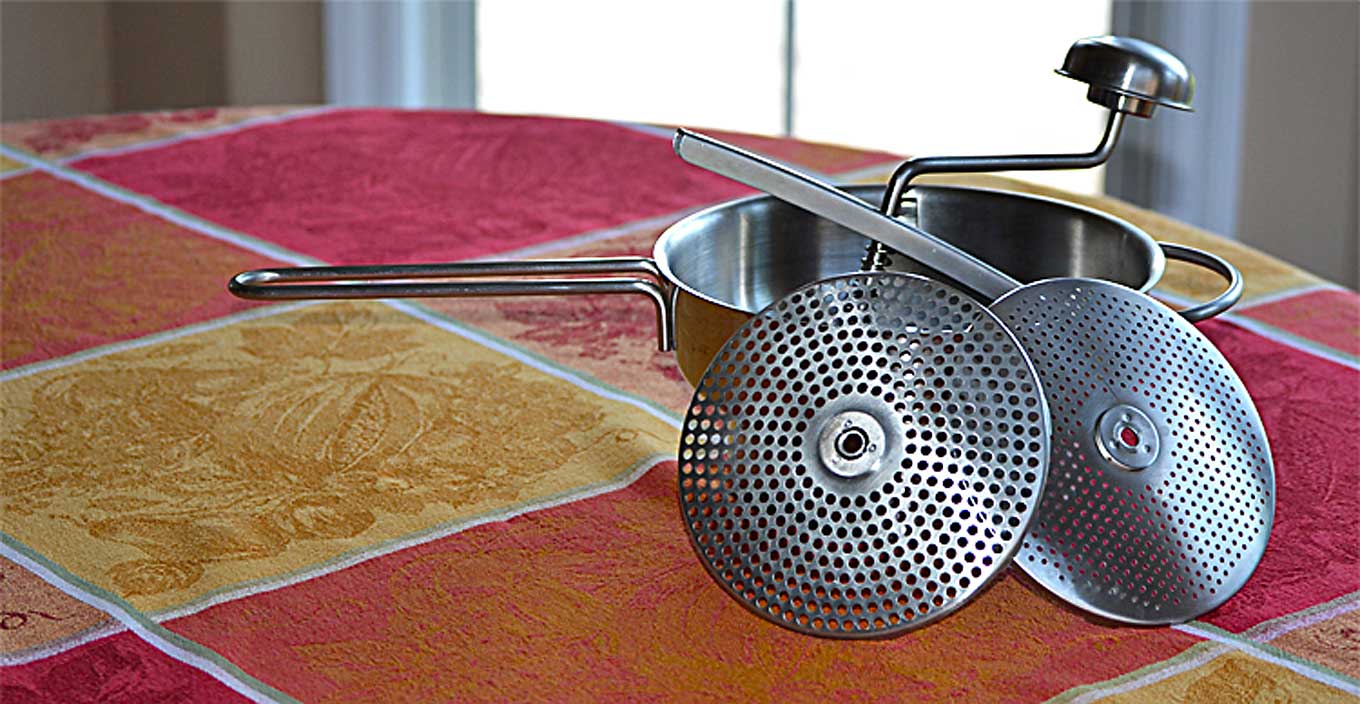how to make tomato sauce

Grating the onion makes all the difference in this recipe. Click here for the fastest way to do it. While many recipes call for finely chopped or minced onion, I prefer grating it for two reasons. Grating breaks down the onion’s cell walls more thoroughly, thus releasing more of its oil and flavoring potency. Also, the resulting pulp and juice contributes nicely to the sauce’s texture. So please, grate an onion if at all possible.

By the way, making this recipe requires a vegetable mill. I know it may seem like an extra step, but I think it’s one that contributes significantly to the ‘freshness’ of a sauce. I’ve tried using crushed tomatoes or pureed tomatoes to make it and have always been left wanting…

Trim the ends off of a white or Vidalia onion and remove the skin. Cut the onion in half length-wise.
Make sure that you can still see the basal plate, or what I refer to as the ‘nub,” of the onion. It’s where the roots of an onion come out and is important for our purposes because it keeps the layers of the onion together as you proceed to grate it. Without the nub, all the layers start coming apart and then you’ll have to grate each one individually. Not only is it not fun when that happens because it takes FOREVER, it also makes you cry…a double drag.

Place the grated onion in a heavy-bottomed stainless steel pot or dutch oven and add 4 tablespoons of regular olive oil, not extra virgin. You are now creating the base for your sauce by ‘sweating,’ or slowly cooking, the grated onion on medium-low heat with a little sea salt for about 20 minutes, just until the onion becomes translucent. Cooking the onion too quickly over too high a heat can create bitterness, so it’s important to cook it SLOWLY.
While the onion is sweating, open up 2 cans of whole peeled tomatoes and pour into a vegetable mill that’s resting on top of a large bowl.
Start turning it. Change directions from time to time, as it will more effectively squeeze out the tomatoes flesh and juice. When pieces of tomatoes become unruly and start to gravitate to the side of the vegetable mill, show them who’s boss and flick them back in the fray.

Keep turning, clockwise some and counter-clockwise some.

You’re done when the tomatoes look absolutely lifeless…like this.

Pour the very liquidy remains of the tomatoes into the now fully sweated onions. What you have now looks like unseasoned bloody mary mix…it will be fairly runny. The sauce will evaporate some as it cooks and will thicken naturally.

In order to make sure this happens, keep the pot lid slightly ajar during the cooking process. It will allow some of the excess liquid to evaporate and the sauce to thicken. Add salt to taste and, if desired, a teaspoon of sugar, which removes some of the acidity of the tomato. Be sure to taste the sauce. Not all salts are equal…some are actually saltier than others. So taste, taste, taste!!
Cook the tomato puree and sweated onion for 30 more minutes, stirring every 10 minutes or so. Be sure to keep the sauce bubbling peacefully and happily, which means that you don’t hear explosive bubbling from across the room and you don’t see billowing clouds of steam emanating from the sauce pot. You want to see gentle threads of steam…like you would see coming from a put-put train.
You’re almost there when you can visually see that some of the sauce’s liquid has evaporated (notice the side of the dutch oven). You want this to happen as it is thickening your sauce nicely. Once thickened, the sauce is done. If you wish, place a few washed leaves of basil on top and close the lid for 5 minutes. Serve with plenty of Parmesan and the pasta shape of your choice.
This recipe makes enough to amply coat a pound and a half of pasta (spaghetti, penne, rotini, etc.).



